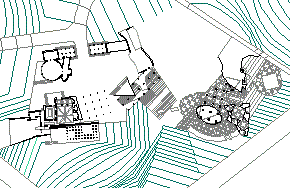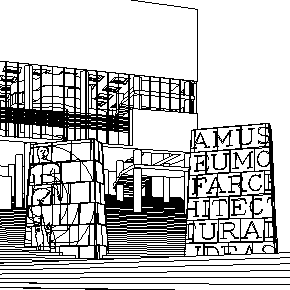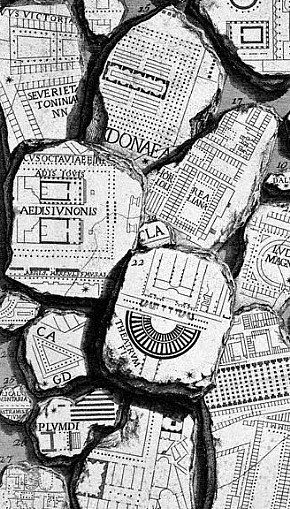1997
Ideal City Reenactment 2297
St. Pierre Firminy-Vert
Hurva Synagogue
Museum for Nordrhein Westfalen
Museum of Arts & Crafts
Fragment Museum 2298
Altes Museum
Houses Under a Common Roof
Villa Savoye
Governor's Palace
Museum of Knowledge
Palais des Congrès
Maison l'Homme
Hurva Synagogue
Wall House 2
Museum for Nordrhein Westfalen
Wallraf-Richartz Museum
Museum of Arts & Crafts
Urban Components
Maison Dom-ino Legacy 3800u
Maison Dom-ino
Composition Three
Palais des Congrès stage set
Olivetti Headquarters conference room
Wall House 2
Stirling's Muses Part I 5605
Altes Museum
Neue Staatsgalerie
Promenade Architecturale: a documentation 3123
| |
1997.02.08
segue to digital museum
Philip Johnson's estate in Connecticut... ...the New Canaan Johnson estate... ...an ideal setting and real museum of architecture (and art). ...segue to digital museum (Acropolis Q) as a virtual place/museum that is an experiment in architecture.

Acropolis Q

1991: A Museum of Architectural Ideas
| |
1997.11.20
me and the Ichnographia
I also have some thoughts regarding the Ichnographia as a stone fragment: this presentation on Piranesi's part could also be considered a reenactment of the Forma Urbis--a virtual reenactment of discovering the great missing piece of the "puzzle" that will bring all the other piece to a grand cohesion. (I am here reminded of Tafuri's opening comments to The Sphere and the Labyrinth, and I'm sure I can now make a good valid connection and elaborate on how the fragment stone map of the Ichnographia represents a kind of "missing link," a piece that will explain all there is to explain about the "real" architecture of Imperial Rome.

"There comes a moment (though no always) in research when all the pieces begin to fall into place, as in a jig-saw puzzle, where all the pieces are near at hand and only one figure can be assembled (and thus the correctness of each move be determined immediately), in research only some of the piece are available, and theoretically more than one figure can be made from them, In fact, there is always the risk of using, more or less consciously, the pieces of he jig-saw puzzle as blocks in a construction game. For this reason, the fact that everything falls into place is an ambiguous sign: either one is completely right or completely wrong. When wrong, we mistake for objective verification the selection and solicitation (more or less deliberate) of the evidence, which is forced to confirm the presuppositions (more or less explicit) of the research itself. The dog thinks it is biting the bone and is instead biting its own tail."
Carlo Ginzburg and Adriano Prosperi, Giochi di pazienza: Un seminario sul "Beneficio di Cristo" (Turin: Einuadi, 1975), p. 84.
| |
| |
|